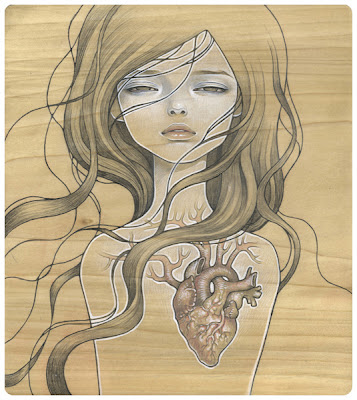The artist that I originally wanted to present was Audrey Kawasaki but I did not know how to relate her to new media. She is from Los Angeles, California and studied fine art painting for two years at the Pratt Institute in New York City but left without completing her degree because she felt that all her teachers had a very strict definition of what are was and that she had little room to explore what she wanted to do.
When she settled back in LA, she developed her own style of oil painting on the organic grain of wood panels. She is naturally pretty timid and soft spoken but once she is with drawings, she feels comfortable and able to express herself freely and honestly. Her work is influenced by innocence and sexuality. Erotic element is something she has always been passionate about with a strong urge to expand upon it.













.jpeg)



































